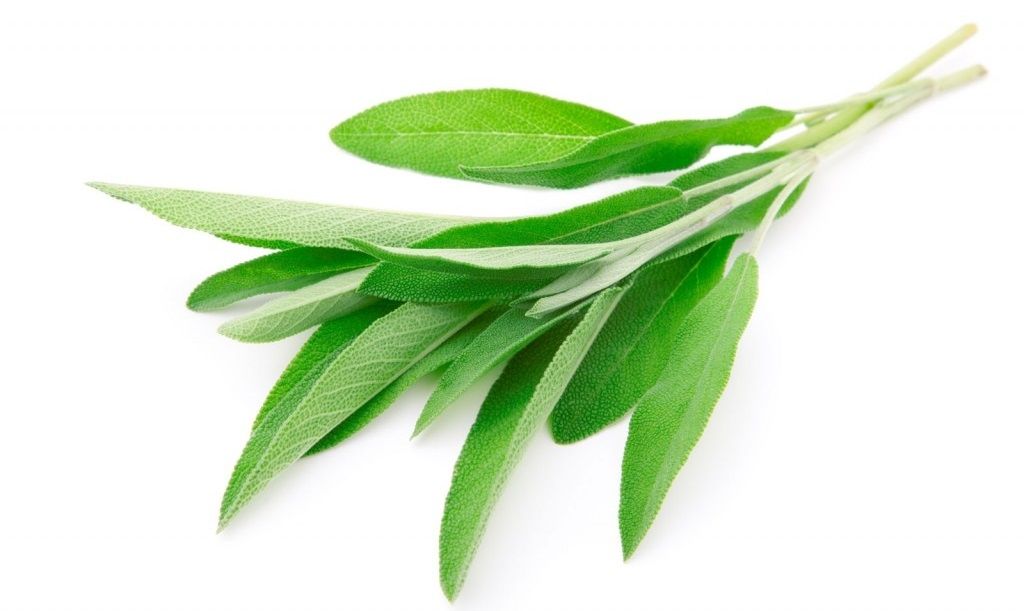Sage
Health Benefits of Sage for Human and Pets
English Name: Sage
What is Sage?
Most North Americans associate sage with either Thanksgiving dinner or a popular Simon and Garfunkel folk song from the 1970s. The perennial evergreen shrub has been prized in many cultures for both culinary and medicinal uses for thousands of years. The savory, peppery flavor and pungent aroma of its dried leaves makes it easy to identify. Since ancient times, the smoke from burning sage leaves has been thought to ward off or expunge evil spirits, and sage is considered an essential herb in English, Italian and Middle Eastern cuisine. The leaves of the plant are usually gray-green and covered in fuzzy white hairs, though modern cultivated varieties include purple, rose, cream and yellow leaves with many variegated combinations. The most common flowers on sage plants are lavender in color, with white, pink and purple blooms appearing less often on ornamental examples1.
How does Sage work?
Sage is closely related to another medicinal and culinary herb: rosemary. The organic compound found in rosemary, rosmarinic acid, is also the compound that makes sage a powerful anti-oxidant, anti-inflammatory and antiseptic. Ursolic acid contributes to the plant’s anti-inflammatory properties, and high levels of vitamin K — which is not found in many other food sources — mean sage can be important for developing and maintaining bone density. Essential oils extracted from the sage plant contain moderately high levels of estrogenic substances, similar to the primary female sex hormones, which may make it effective for boosting fertility and regulating breast milk2.
What are the benefits of Sage?
Research has shown much promise in sage as an effective treatment for patients with Alzheimer’s and other memory related difficulties. Ingesting even a single dose has yielded a boost in alertness and memory in healthy adults, and regular consumption can increase the ability to learn, process and remember information. Other long-term benefits of consuming sage include lower “bad” cholesterol, higher “good” cholesterol, better overall cognition and relief from menopausal symptoms like hot flashes and night sweats3. Sage is also commonly known to be safe and beneficial for house pets, and many brands of food aimed at older dogs include sage for its significant antiaging and longevity benefits4.
Products Featuring Sage
For Humans:
LoveSpark™ Essential Oil Blend
For Pets:
Complete Brain Health for Senior Dogs ComboPack

Native Remedies recommends you consult your doctor before introducing new herbal products into your regimen. Always ensure you are buying high-quality, laboratory-tested supplements from a reputable supplier. At Native Remedies, we back all our products with a 100 percent money-back guarantee. If you’re not happy with your purchase after trying it for 30 days, simply send it back for a refund. Here’s to your good health!
The content provided is for informational purposes only. It is not a substitute for professional medical advice. If you have a health condition, please consult a medical professional and do not use this information to self-diagnose or self-treat.
Resources:
[1] "HerbalGram: Sage." HerbClip: Ashwagandha Monograph. 2010. Accessed October 07, 2018.
[2] "9 Impressive Benefits of Sage." Organic Facts. September 28, 2018. Accessed October 07, 2018. https://www.organicfacts.net/health-benefits/herbs-and-spices/sage.html.
[3] "Sage: Uses, Side Effects, Interactions, Dosage, and Warning." WebMD. Accessed October 07, 2018. https://www.webmd.com/vitamins/ai/ingredientmono-504/sage.
[4] Burns, George. "Sage." Land of Holistic Pets. February 11, 2015. Accessed October 07, 2018.
Reviewed by Master Herbalist, Mary Ellen Kosanke
